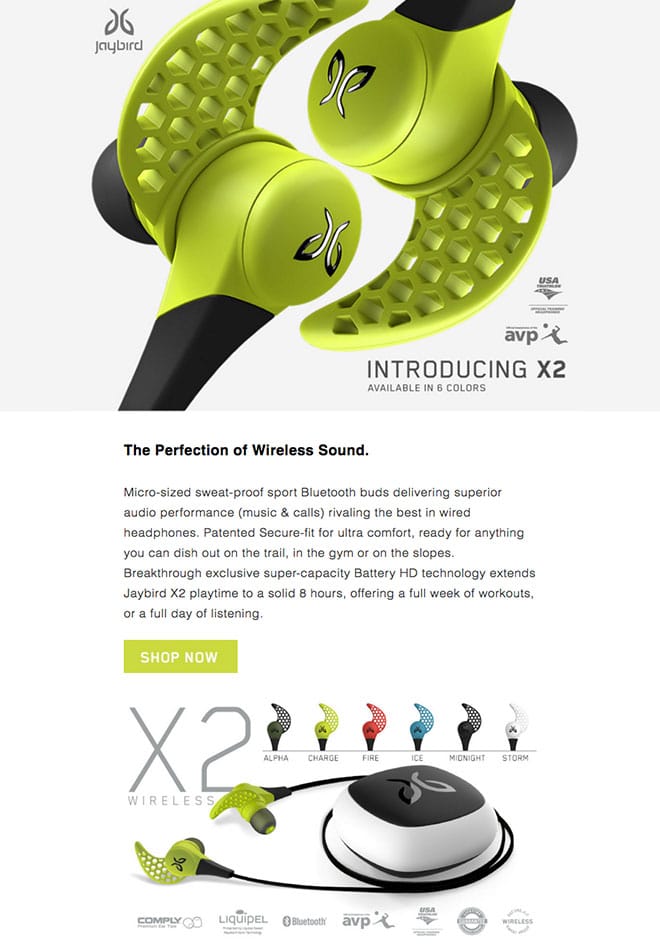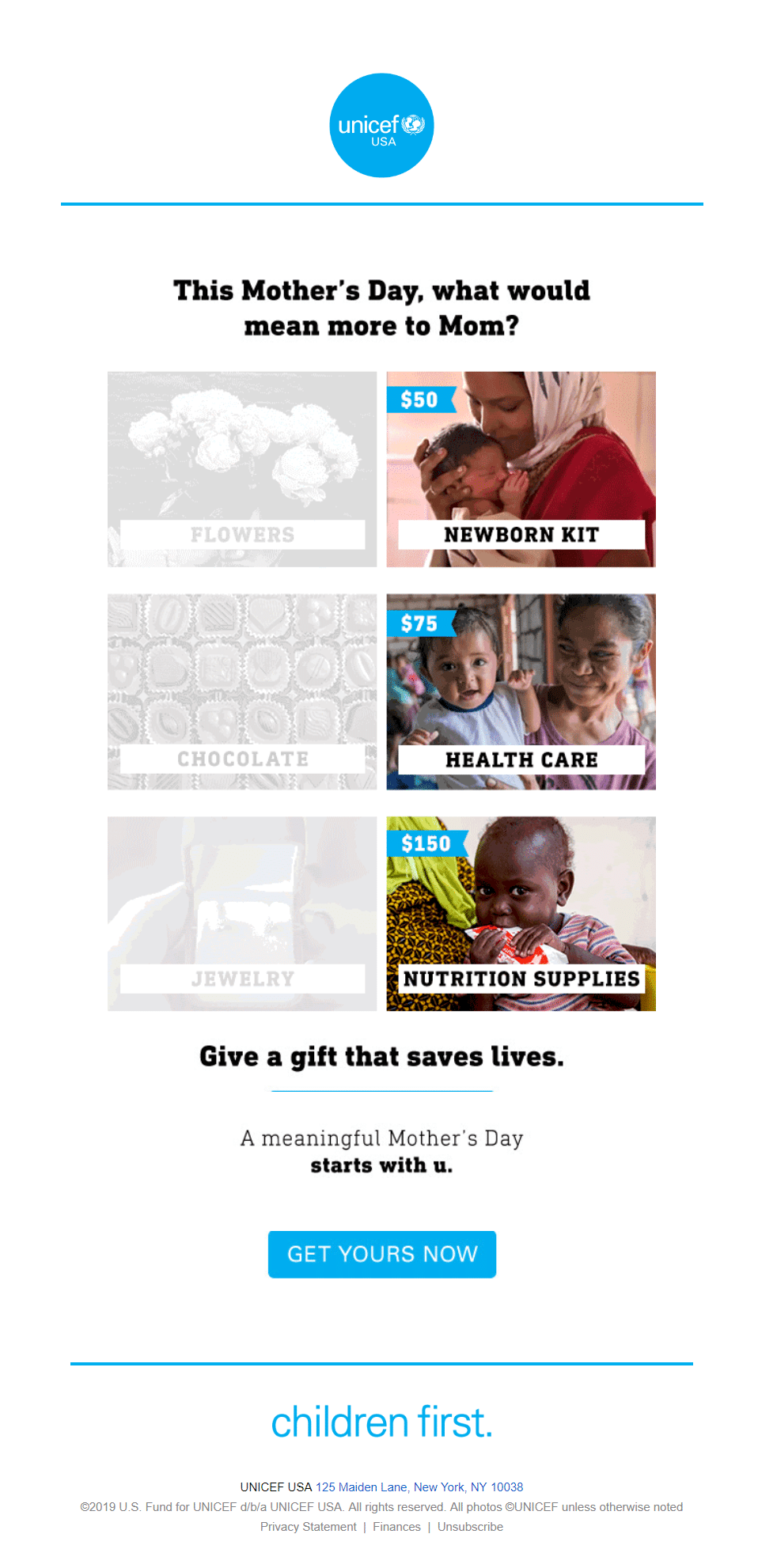“30% off—Shop now!” How many times have you received (or even sent) this same tired email?
Don’t worry—we’re not here to shame. We do, however, want to help you improve your campaign copywriting.
Email copywriting examples and tips to create conversations
Email is all about creating a conversation with your subscribers and reaching them on a personal level.
Read on to discover the best practices for copywriting in your emails. We’ll also provide some email copywriting examples to learn from.
Email copywriting 101: Best practices and tips
By 2023, it’s estimated that 347.3 billion emails will be sent from 4,371 million users—every day.
It’s a lot of emails.
As marketers, it’s not enough to just avoid contributing to the static and noise: We need to create content people genuinely want to open, read, and share with their friends.
If you want to be part of the solution, focus your attention towards your email copywriting.
Write a subject, preview, and first paragraph that flows.
As you optimize for mobile, you’ll likely notice that push notifications from Gmail or Apple iPhone don’t leave much room for creativity with subject lines.
Keeping your subject line under 40 characters is the only way to ensure it won’t get cut off by email client apps. To get around this limit, make good use of your preview text and first copy paragraph of your email.
Use your preview text to play off your subject line and elaborate on the topic in your initial paragraph.
It’s common for marketers to repeat themselves in these sections, and this is a big mistake. If your subscribers expand the push notification to get a better idea of your email content, they’ll just see the same thing expressed three different times.
Get personal.
Successful campaigns use the subscriber’s real name throughout the text. Customers are 75% more likely to spend money with a brand that recognizes them by name.
However, personalization goes far beyond just using your subscriber’s real name. You can personalize the copy based on location, gender, age, job role, behavior, interests, parental status, and more.
Highly personalized emails are naturally more relevant to your subscribers.
Make your copy scannable.
According to research from Nielsen Norman Group, users don’t read every word on a page; they scan in an “F” pattern. Email campaigns are no different.
As you write your emails, leave plenty of white space to make it easy for your subscribers to scan the page and pick out the information they need.
Incorporate headings, as needed, and develop a nice typeface hierarchy to help readers differentiate between ideas.
Explain why your email is relevant.
You need to explain why your email is relevant and you need to do it fast.
What will your subscribers get out of opening the email, reading it, and taking action? If you must elaborate within your email, do so in the middle or bottom after your subscribers have understood the email’s purpose.
Take advantage of snippets, one-line summaries, and even memes or custom GIFs to expand your thoughts in fewer words. If subscribers want to continue reading, they can click the link to finish the blog post.
Write for one person.
Remember that every subscriber opening your email is a real person. People spend the equivalent of an entire day online each week.
Don’t use this as a free pass to write a novel. Instead, just follow the email copywriting examples below, and write like you’re speaking to one specific person, rather than 500 or 5,000. Your subscribers will appreciate the connection.
Keep your branding consistent.
You can customize your templates for branding to your heart’s content, but all that effort can quickly fall flat if you don’t keep your voice and tone consistent. Consistency is crucial for building trust among leads and even current customers.
Write in second person.
While you want to build a conversation, you also want to keep the attention on your subscriber. The word “we” is valuable when you’re trying to make your subscriber feel like they’re part of your network or online family—but that’s about it.
You’ll notice that many of the email copywriting examples below write in the second person (you) to make the content about the subscriber’s entertainment, needs, wants, and wellbeing.
Focus on benefits.
Elaborating on the point above, it’s equally important to keep the focus on your subscriber’s wellbeing.
How will this specific email improve their life? Which tips or hacks are you educating them about in your newsletter? How will this sweatshirt you’re promoting improve their daily life?
“The perfect fleece for Sunday afternoon napping while The Office plays on Netflix in the background” is much better than “the highest quality fleece we could find.”
Keep it short.
If you can get your message across in three words instead of eight, you should.
Don’t digress into multiple actions.
Focus on one specific goal for each email. Don’t use your event email to promote your new products—stick to the task at hand.
Personalized customer journeys and automated campaigns based on triggered events make it easy to create a series of emails—each with their own unique goal.
Use the right verbs in your CTA.
Using action verbs isn’t enough—they need to be specific. Nielsen Norman Group found that people don’t trust or feel interested in CTA buttons with phrases like “Get Started” or “Learn More.”
“Shop the Spring Collection” or “RSVP Now” are much better.
Your landing page also needs to match the content described on the button. In other words, don’t make your leads jump through hoops to complete an action.
6 email copywriting examples
Draw inspiration from these six email copywriting examples to write campaigns that connect with your subscribers and encourage action.
1. Jaybird
The copy in this Jaybird email focuses entirely on the subscriber by highlighting how the product will improve their lives.
Take special note of phrases like “sweat-proof,” “music & calls,” and “a full week of workouts.” Those phrases help the subscriber visualize themselves using the product—compared to phrases like “water-resistant and a long battery life.”
Source: Campaign Monitor
2. UNICEF
UNICEF doesn’t beat around the bush. They get right to the point by letting readers know the purpose of the email.
As an organization asking for donations, UNICEF still manages to make the subscriber feel included by including the word “you.”
The “Get Yours Now” CTA is bright and attention-grabbing.
Source: Gmail
3. emeals
A lot of brands go slightly overboard with the copy in their newsletters—not emeals. Notice how emeals included a few blog posts—centered on one topic—with a small description for each one.
Emeals still managed to make the email about their subscriber by adding phrases like “meet your weight loss goals in 2019.”
Source: Really Good Emails
4. The Telegraph
The Telegraph didn’t bog down this promotional email with articles and other content; they dove right into the purpose and followed up with an offer.
The strategic CTA says “Start free trial” rather than “Buy now” to help highlight the benefits as well.
Source: Gmail
5. Living Spaces
Living Spaces made this email all about the recipient and conveyed a warm conversation. The copy is almost poetic and gets straight to the purpose.
Source: Campaign Monitor
6. Lonely Planet
Lonely Planet chooses one specific topic for each email; this one includes blog posts about Europe.
In each snippet, the reader is transported to different locations across Europe. If they want to read more, subscribers can simply click the link. If not, they can keep scrolling without walls of text.
At the bottom, Lonely Planet included their CTA: a link to purchase their European guidebooks.
Source: Gmail
Wrap up
Email copywriting is similar to the style you use for your web pages: concise, engaging, and actionable. Keep the following in mind next time you’re writing email copy:
- Remember that it’s all about your subscribers: their needs, benefits, and wellbeing.
- Create a conversation instead of making announcements.
- Stay consistent to build trust and brand recognition.
- Use actionable language to entice readers to take action.
Remember that you’re speaking to real human beings on the other end of the email. How can you convey your message and explain the benefits of your brand to them through your writing?
Ready to write email subject lines that get your emails opened every time? Check out the Campaign Monitor guide for being a subject line superhero.










